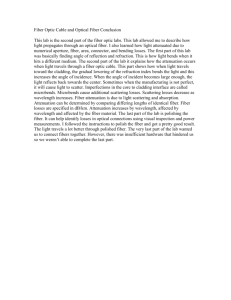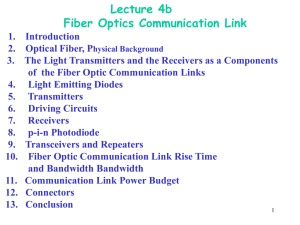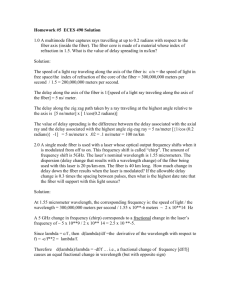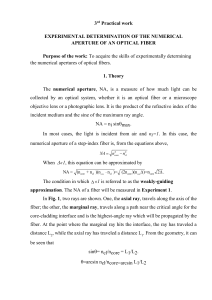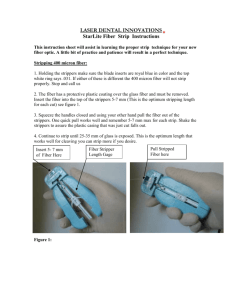Solution - UCSD Department of Physics
advertisement
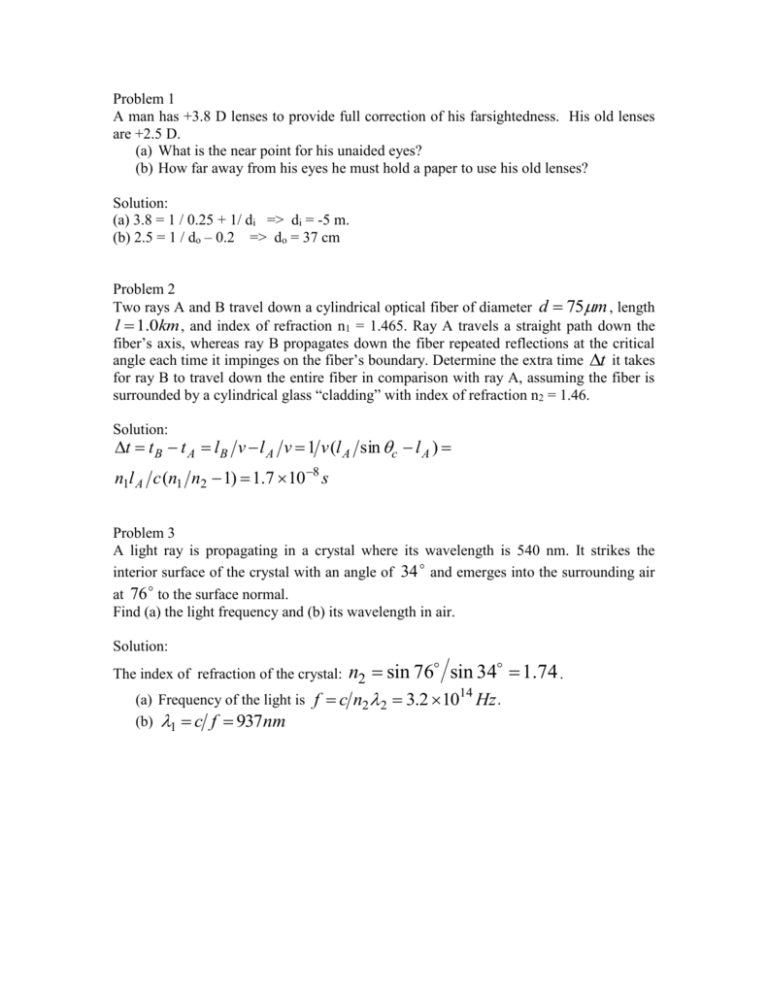
Problem 1 A man has +3.8 D lenses to provide full correction of his farsightedness. His old lenses are +2.5 D. (a) What is the near point for his unaided eyes? (b) How far away from his eyes he must hold a paper to use his old lenses? Solution: (a) 3.8 = 1 / 0.25 + 1/ di => di = -5 m. (b) 2.5 = 1 / do – 0.2 => do = 37 cm Problem 2 Two rays A and B travel down a cylindrical optical fiber of diameter d 75m , length l 1.0km , and index of refraction n1 = 1.465. Ray A travels a straight path down the fiber’s axis, whereas ray B propagates down the fiber repeated reflections at the critical angle each time it impinges on the fiber’s boundary. Determine the extra time t it takes for ray B to travel down the entire fiber in comparison with ray A, assuming the fiber is surrounded by a cylindrical glass “cladding” with index of refraction n2 = 1.46. Solution: t t B t A l B v l A v 1 v(l A sin c l A ) n1l A c(n1 n2 1) 1.7 10 8 s Problem 3 A light ray is propagating in a crystal where its wavelength is 540 nm. It strikes the interior surface of the crystal with an angle of 34 and emerges into the surrounding air at 76 to the surface normal. Find (a) the light frequency and (b) its wavelength in air. Solution: n2 sin 76 sin 34 1.74 . f c n2 2 3.2 1014 Hz . The index of refraction of the crystal: (a) Frequency of the light is (b) 1 c f 937nm


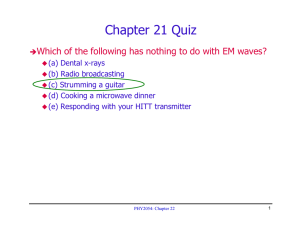

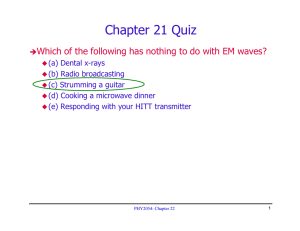
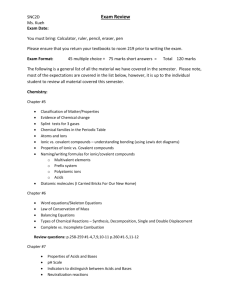

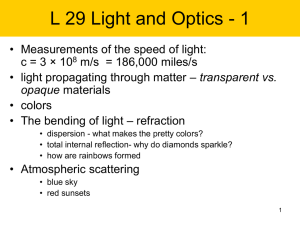

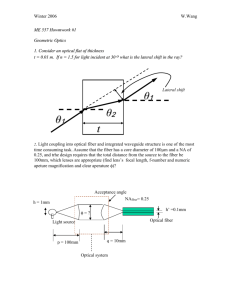


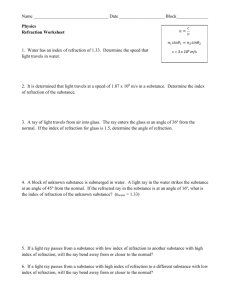
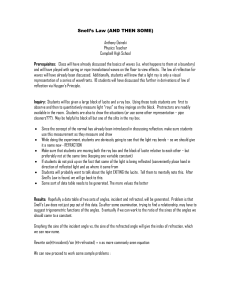
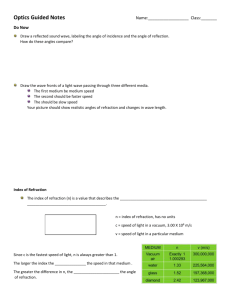
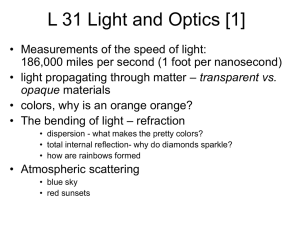
![L 31 Light and Optics [1]](http://s2.studylib.net/store/data/010281755_1-46f5df031b04d65b3c7f16034709673e-300x300.png)
